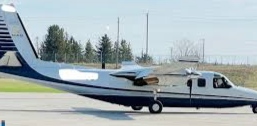A light plane that was assisting in the suppression of fires in Mount Isa, in the northwest of Queensland, crashed, killing three persons.
After a resident alerted the police at 2:30 p.m., emergency personnel spent hours getting to the isolated site today afternoon in the McKinlay area on the outskirts of Cloncurry.
Authorities reported that while ground workers were their route to the scene, the Rescue 400 helicopter discovered the wreckage “in difficult terrain” at 4 p.m.
“A spokesperson for Queensland Police stated in a statement that three individuals on board had been located and confirmed to be deceased.”
The aircraft crashed while it was flying from Toowoomba to Mount Isa as part of a contract to support the bushfire response by doing line scans.
QFES, the Queensland Fire and Emergency Service, sent the families its “deepest condolences”.
“Our hearts are heavy following the fatal plane crash this afternoon in north west Queensland and the tragic loss of three people supporting our bushfire response,” QFES stated.
“In Queensland, we respond like a family to natural calamities. The people hired to assist with our aerial operations are part of that family.
“Side by side we have been fighting these bushfires as one and their loss is felt by all.”Our prayers and condolences go out to their friends, family, and coworkers, especially our Air Operations staff.”
The accident will be the subject of an independent inquiry by the Australian Transport Safety Bureau (ATSB).
“A team of transport safety investigators from the ATSB’s Brisbane office with experience in aircraft operations and maintenance are preparing to deploy to the accident site,” according to a spokesperson on Saturday.
“In the next few days, investigators will map the site, examine the wreckage, and retrieve any aircraft components for additional testing at the ATSB’s technical facilities in Canberra as part of their evidence-gathering efforts.
Along with gathering pertinent recorded material, such as flight tracking data, pilot and aircraft maintenance records, and meteorological data, investigators will also attempt to speak with any witnesses and parties who may have been involved.
“In roughly six to eight weeks, the ATSB plans to release a preliminary report that will include factual information gathered during the investigation’s initial evidence collection phase.
“After the inquiry is complete, the ATSB will release a final report that will include information on any safety issues that were found as well as contributing factors.
“However, should any critical safety issues be identified at any stage during the course of the investigation, the ATSB will immediately notify relevant parties so appropriate safety action can be taken.”





